リストアップされたのはほかに、バビロン(イラク)、東南アジアとオセアニアにまたがるコーラルトライアングル、マチュピチュ(ペルー)、モルディブ、ベネチア(イタリア)、万里の長城(中国)。
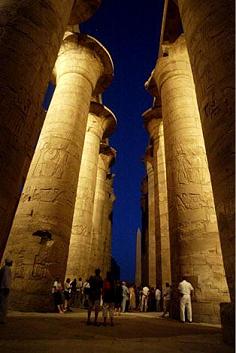
LUXOR, EGYPT: Dating back to the 14th century B.C., the Luxor temple complex on the west bank of the Nile River--which includes the Valley of the Kings, the Valley of the Queens, more than 40 temples and the tombs of thousands of nobles--is threatened not only by the ravages of tourism and theft but by the Nile itself. The construction of the Aswan Dam 40 years ago has caused salt to build up in the newly fertile soil around the temples, eroding their ancient foundations and filling many tombs with water. The World Monuments Fund is currently devising a management plan for the site and hopes to give the complex its biggest renovation since Alexander the Great.
同誌によると、ルクソールではアスワン・ハイダムの完成で、かつてナイル川のはんらんで洗い流されていた塩が蓄積され神殿の土台を浸食。
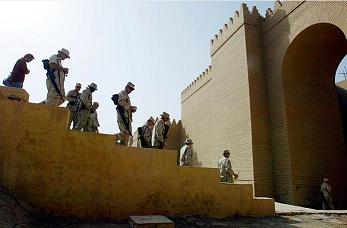
BABYLON, IRAQ: The home of the legendary 'hanging gardens' and the largest ancient settlement in Mesopotamia was largely built by King Nebuchadnezzar in the 7th century B.C. Since the ruins were uncovered at the turn of the 20th century, artifacts have been removed, damaged and contaminated. Saddam Hussein installed a giant portrait of himself there and U. S. troops built trenches and crushed ancient roads. A recent British Museum report warns that Iraq lacks the resources to restore the site and urges an international effort.
バビロン遺跡は米軍のイラク進攻・駐留で損傷した。
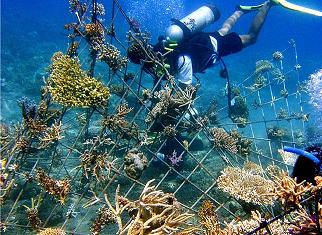
CORAL TRIANGLE, INDONESIA: Home to one of the most diverse collections of marine life in the world, the Coral Triangle extends from the waters of eastern Indonesia to Papua New Guinea, the Philippines, parts of Malaysia and the Solomon islands. More than 3,000 species of fish and 600 varieties of coral-a full 75 percent of those known to exist-have been found there. But this ecosystem faces a growing threat from overfishing as well as destructive fishing, in which explosives or poisons are used to kill the fish, not only depleting the stock but also permanently destroying their habitat. Highly desirable species like grouper and Napoleon wrasse have already been fished to near extinction. Rising sea temperatures have also increased periods of coral bleaching, which kills the reefs.
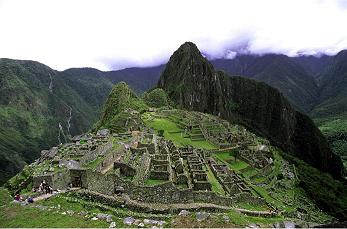
MACHU PICCHU, PERU: The ancient Inca city of Machu Picchu is in danger of becoming a victim of its own popularity. Built around 1460 and discovered by American historian Hiram Bingham in 1911, the breathtaking and well-preserved mountain ruins have become Peru's most popular tourist attraction, drawing half a million visitors every year. The site's 200 buildings, located in a geological fault zone, are in a precarious position to begin with.
Constant foot traffic has made matters worse, wearing down and destabilizing the ancient stone foundations. Development near the site is exacerbating the problem of landslides, which threaten to dislodge Machu Picchu from its alpine perch. To stem the tide, Peru recently limited the number of visitors to 500 per day and closes the site for one month every year to repair damaged trails. But that may be too little too late.
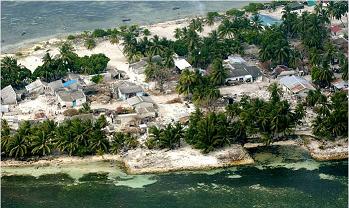
MALDIVES: It might not seem possible for an entire country to sink, but that is exactly what is happening to the Maldives, a nation of 12,000 islands that contain some of the richest marine life in the world. With more than 80 percent of its land less than three feet above sea level, the Maldives, a nation of 12,000 islands that contain some of the richest marine life in the world. With more than 80 percent of its land less than three feet above sea level, the Maldives are particularly at risk from the rising sea levels caused by global warming. The 2004 tsunami, which devastated the country's infrastructure, has already erased some tiny atolls. Conservationists hope to prevent further erosion by regrowing damaged coral reefs.
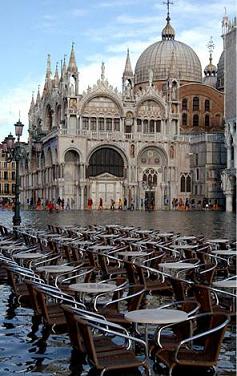
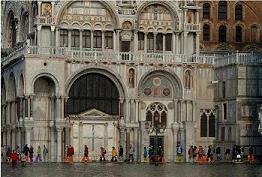
VENICE, ITALY: Venice has two problems with water: The land is sinking, at a rate of nearly a half-inch per century almost since Venice was settled in 452, and at the same time changes in tides and rising sea levels are also threatening to swamp the city. Heavy-industry workers pumping groundwater from below the city and huge wakes left by freighters and cruise ships have added to the problem, and the city can't afford the proposed expensive fixes to dry the place out.
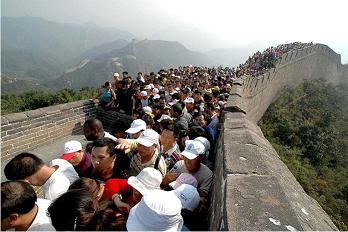
GREAT WALL, CHINA: The oldest parts of China's most famous landmark were built in the fifth century B.C., but the 14th-century Ming dynasty really strengthened it. Today nearly two-thirds of the nearly 4,000-mile wall has been destroyed by erosion and unchecked development.
http://www.msnbc.msn.com/id/12115727/site/newsweek/